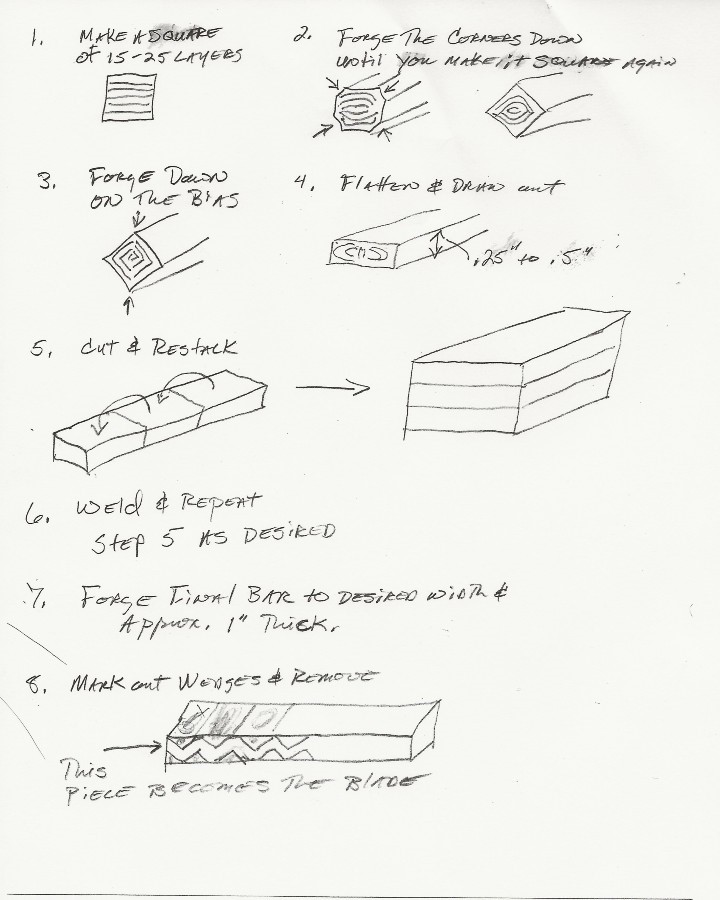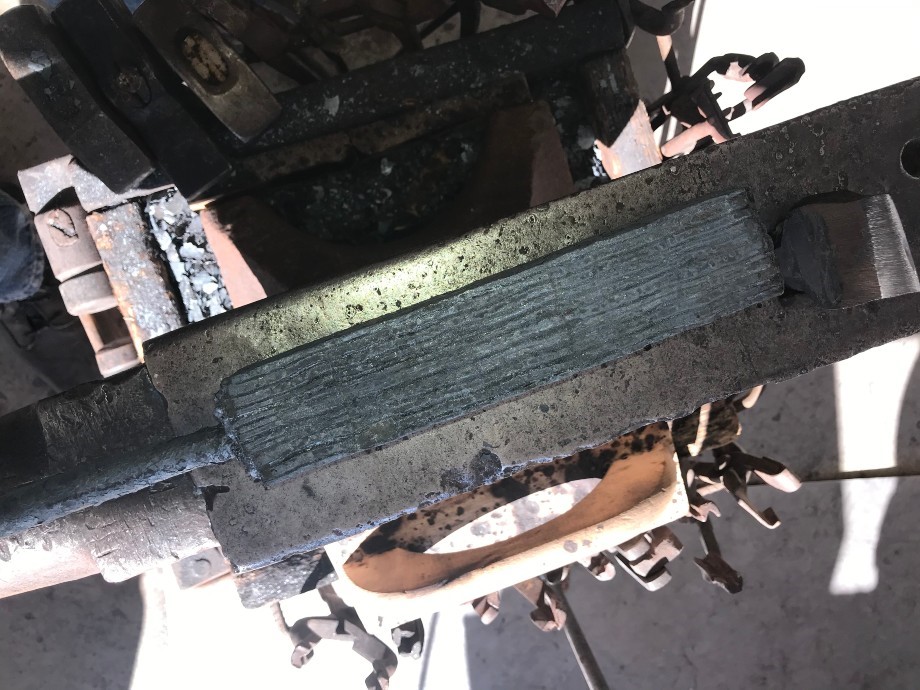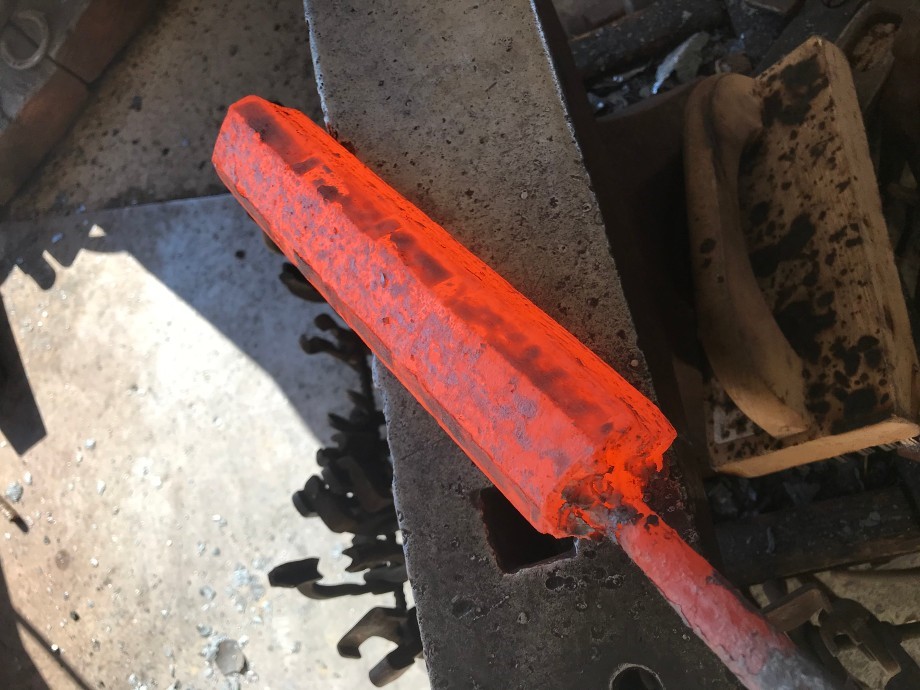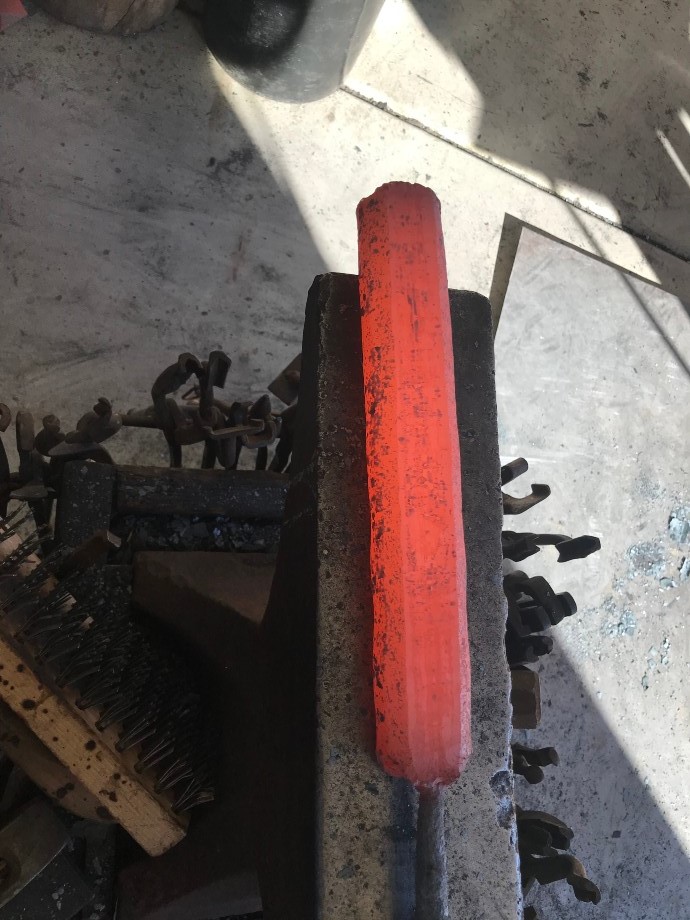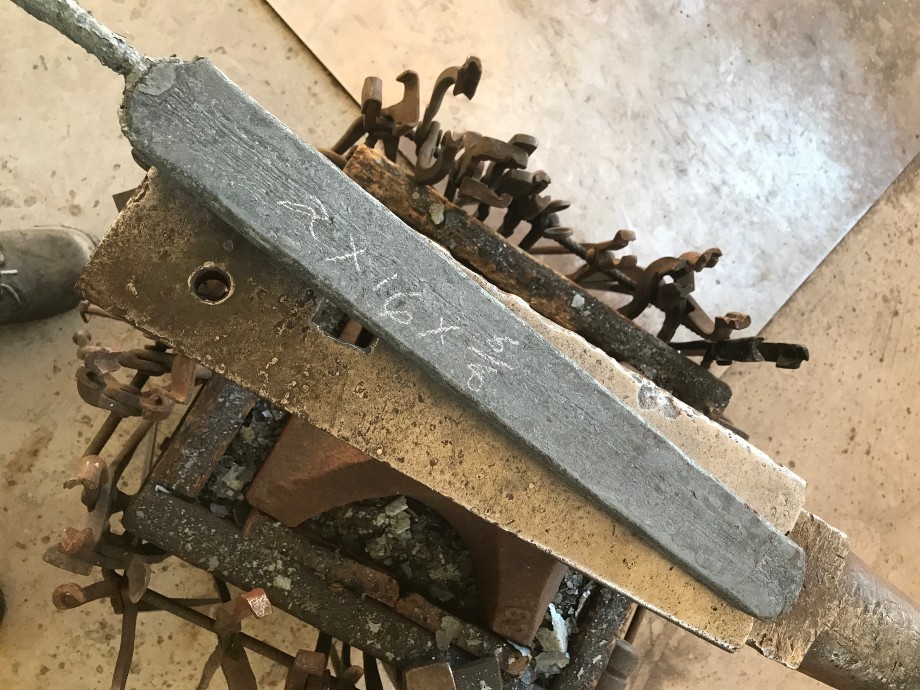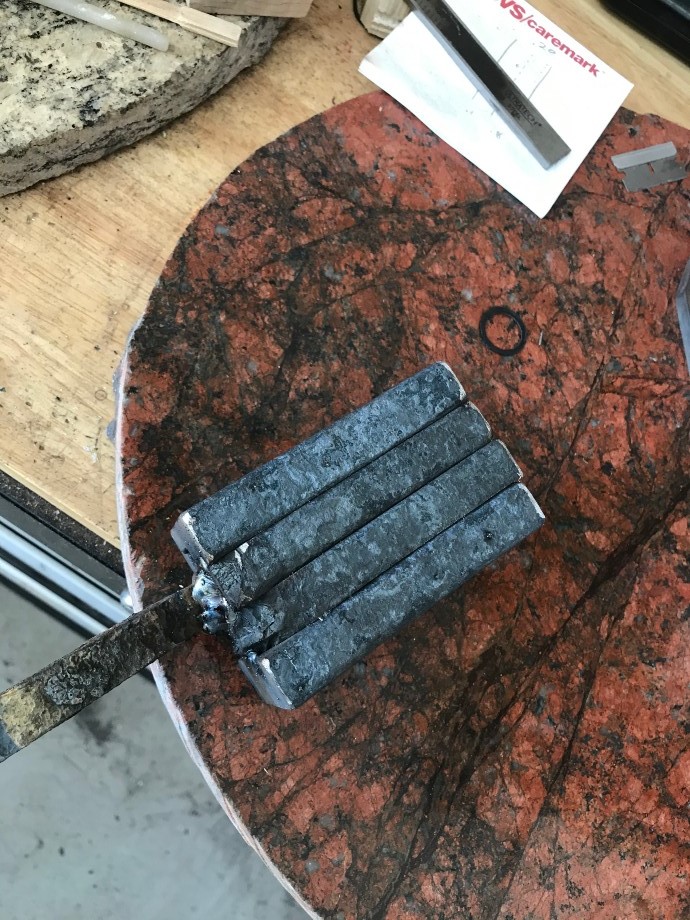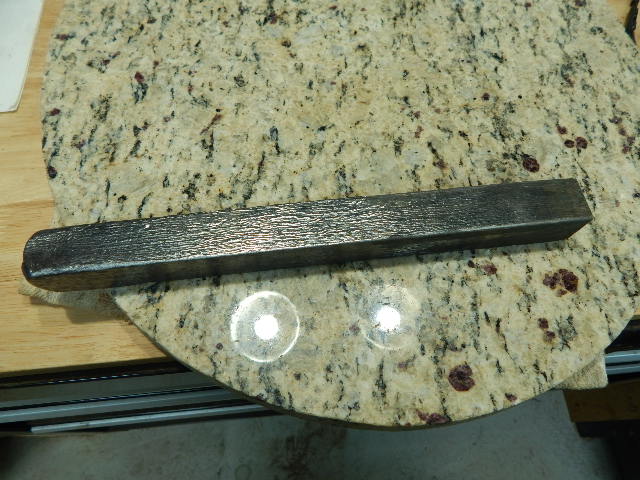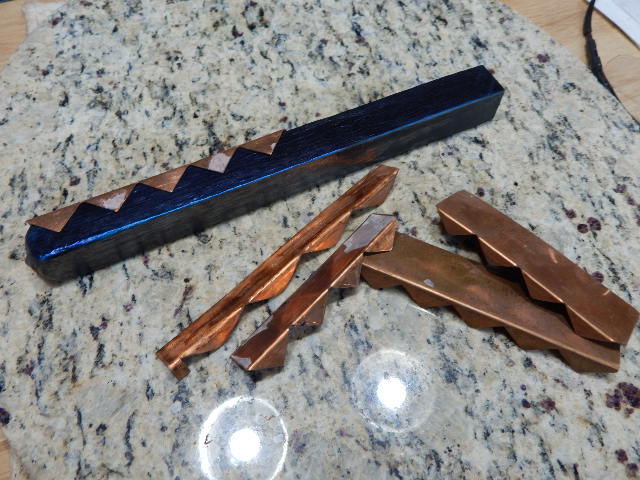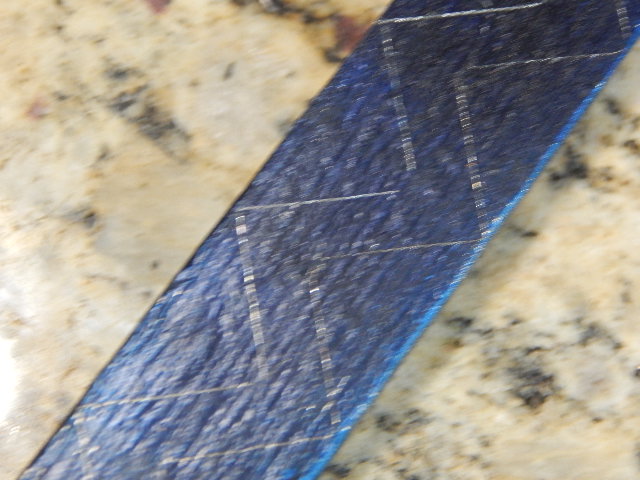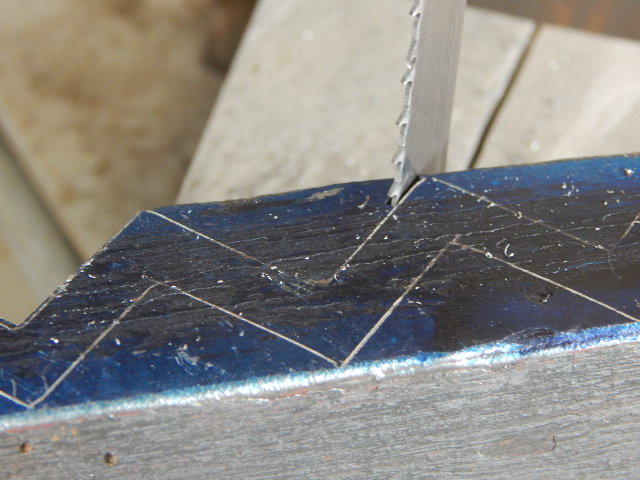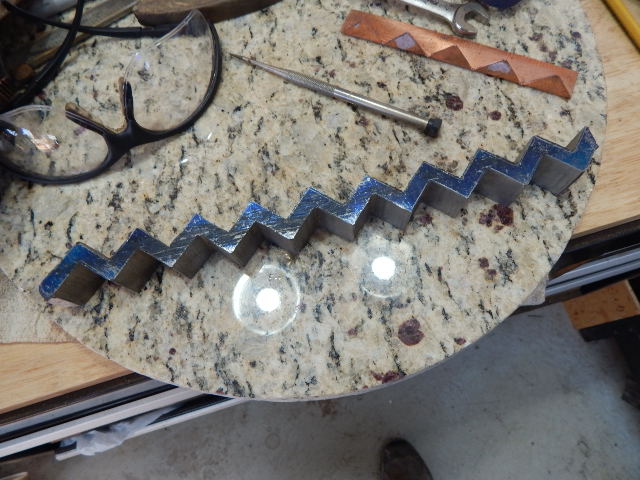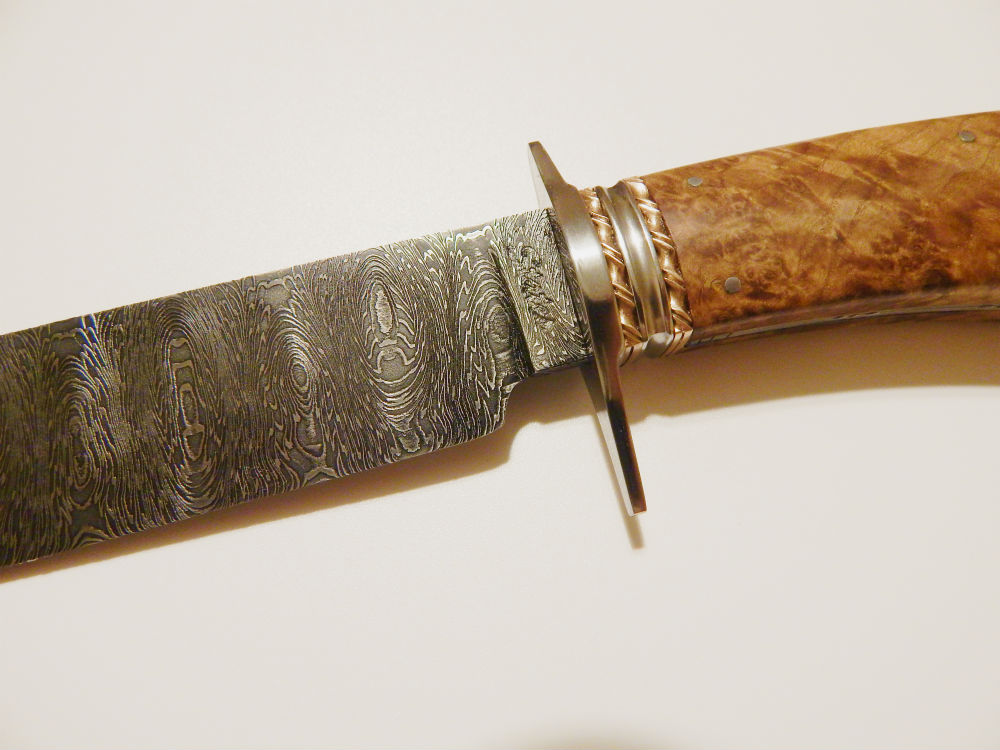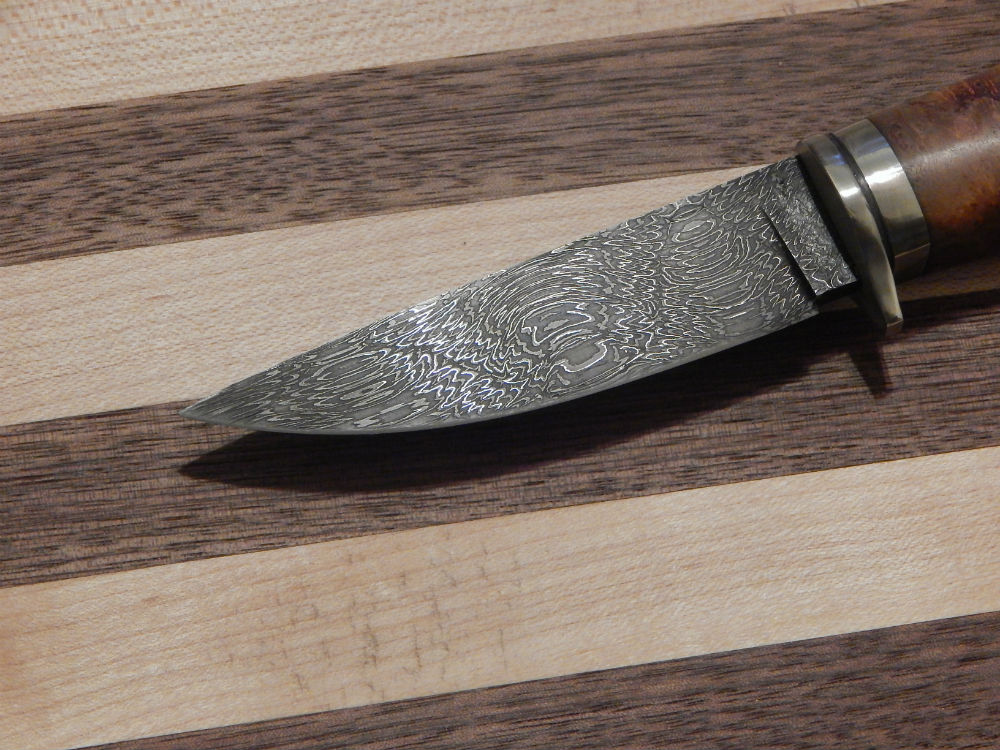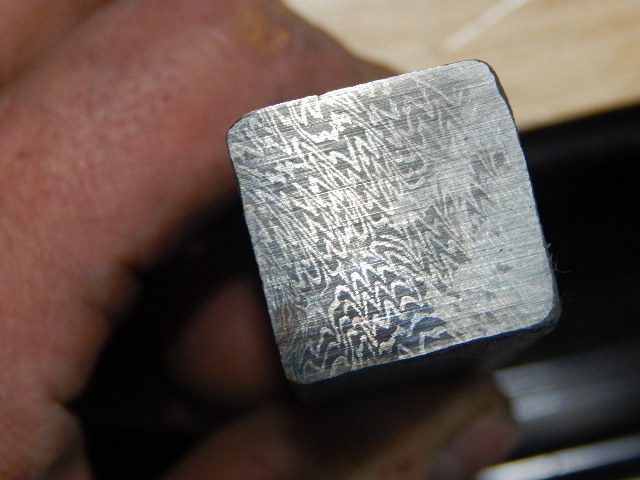I recently put together a drawing and a photo record of how I do this popular pattern. There are different ways to forge this pattern and different ways to achieve the final out come. I will preface this by saying that I have both a hydraulic press and a small power hammer. So, I work with fairly large billets. Similar results can be obtained with a smaller starting size and using only a hammer and anvil.
You can follow the process with this diagram.
In this demonstration, I started with 12 pieces of 1095 and 12 pieces of 15N20. Each piece is 1.5" by 5.75". The 1095 is equally split between 3/16" and 1/8" thick. The 15N20 is .06" thick. This billet got welded and forged out to approximately 1.5" square and 9" long. Here it is about 1.75" square and 8" long.
Then I start to truncate the corners, aiming to get mostly re-squared. I have gone all the way to square before, but this time I stopped short of square leaving about 1/4" of the original faces flat.
Then I lay the piece on the edge and flatten out the billet.
More tomorrow
Joshua States
www.dosgatosforge.com
https://www.youtube.com/channel/UCdJMFMqnbLYqv965xd64vYg
https://www.facebook.com/dos.gatos.71
Also on Instagram and Facebook as J.States Bladesmith
“So I'm lightin' out for the territory, ahead of the scared and the weak and the mean spirited, because Aunt Sally is fixin’ to adopt me and civilize me, and I can't stand it. I've been there before.â€
I use the same process but just a little higher layer count. I do an initial billet of about 48 layers.
Re-square with squaring dies.
Flatten.
Then I do 4x4 for 16 layers of crushed Ws.
Ladder and enjoy!
Karl B. Andersen
Journeyman Smith
Thanks for sharing this, adds to the knowledge base!
Instagram @drunken.bladesmith
Thanks for the excellent write-up! I've been trying to wrap my head around Ws and this is the best instructional I've come across so far.
So to continue the demo, the next step is to Flatten, cut, restack, weld and draw out.
Here is this bar drawn out.
Cut and stacked. The mating surfaces are ground clean and smooth.
This flatten/cut/stack/weld process gets repeated until I think I have enough pattern. Eventually, I create a new bar, approximately 1" square.
This get annealed in the Paragon for cutting. (thanks to Kevin Cashen for the ramp speeds & hold times) I spray the sides with Dykem layout fluid and use one of the templates I have made from flattened copper sheet to mark the cuts. This is called accordion cutting.
I cut the bar with a band saw. You can use an angle grinder with a cut off wheel, or just grind them out on the 2x72 using the edge/corner of the platen. Some folks like to drill a hole at the bottom of the V-notch to relieve the stresses when flattening. I just clean them up with the 2x72 and round them a little. Some folks do a tile cut rather than an accordion cut. It saves steel, but is a different process. maybe someone who does tile cuts will add some photos to this thread.
I end up with this bar. This gets flattened out and shaped into the blade.
Joshua States
www.dosgatosforge.com
https://www.youtube.com/channel/UCdJMFMqnbLYqv965xd64vYg
https://www.facebook.com/dos.gatos.71
Also on Instagram and Facebook as J.States Bladesmith
“So I'm lightin' out for the territory, ahead of the scared and the weak and the mean spirited, because Aunt Sally is fixin’ to adopt me and civilize me, and I can't stand it. I've been there before.â€
Here are some examples of what this looks like when done.
Joshua States
www.dosgatosforge.com
https://www.youtube.com/channel/UCdJMFMqnbLYqv965xd64vYg
https://www.facebook.com/dos.gatos.71
Also on Instagram and Facebook as J.States Bladesmith
“So I'm lightin' out for the territory, ahead of the scared and the weak and the mean spirited, because Aunt Sally is fixin’ to adopt me and civilize me, and I can't stand it. I've been there before.â€
Karl talked about crushing and 4-way.
"Crushing" is re-squaring the billet, or forging it on the bias, as the final forging. (see step 2 and repeat it). If you do not "crush" the bar, the pattern goes from side to side. If you crush the bar, the pattern goes from corner to corner. Like this.
If you then cut that bar into 4 equal length pieces, arrange them in a square, and weld them together, you get a bar where the pattern goes from center of each side to center of each side around the square. I have a photo of this somewhere, I will look for it) Karl, If you have a pic of a 4-way end grain, please add it.
If anyone wants to add photos of W-pattern blades or process, please feel free to do so..
Joshua States
www.dosgatosforge.com
https://www.youtube.com/channel/UCdJMFMqnbLYqv965xd64vYg
https://www.facebook.com/dos.gatos.71
Also on Instagram and Facebook as J.States Bladesmith
“So I'm lightin' out for the territory, ahead of the scared and the weak and the mean spirited, because Aunt Sally is fixin’ to adopt me and civilize me, and I can't stand it. I've been there before.â€
No - I don't 4 way at all.
I was saying after I forge on the bias to "crush" the layers, I draw out and cut 4 - restack and weld.
Then draw that out - cut 4 - restack and weld.
This ends with 16 layers of the crushed steel.
I then forge the blade to the basic profile and ladder.
I've got lots of better pictures - somewhere.

Here is the same basic Crushed Ws pattern but I used it in a "transition" pattern:

Karl B. Andersen
Journeyman Smith
I'm amazed that I found these.
This is the exact same method, but I used West Texas Wind ladder dies on this:


Karl B. Andersen
Journeyman Smith
Great photos Karl. That's a very tight ladder/accordion. Thanks for adding them and sorry for the misunderstanding about the 4-Way.
Do you do a press & grind for the ladder reveal?
Joshua States
www.dosgatosforge.com
https://www.youtube.com/channel/UCdJMFMqnbLYqv965xd64vYg
https://www.facebook.com/dos.gatos.71
Also on Instagram and Facebook as J.States Bladesmith
“So I'm lightin' out for the territory, ahead of the scared and the weak and the mean spirited, because Aunt Sally is fixin’ to adopt me and civilize me, and I can't stand it. I've been there before.â€
I use ladder dies and grind off the high spots.
I wouldn't confuse that with accordion.
Karl B. Andersen
Journeyman Smith
Your W's look amazing! I am working on a billet now that I really wanted to try crushed W's on.
Thanks for the tutorial. I was not using either the accordion or ladder approach. Instead I was flattening the final billet and disappointed that I was not getting the pattern I expected. Wish I would have seen this last year.

